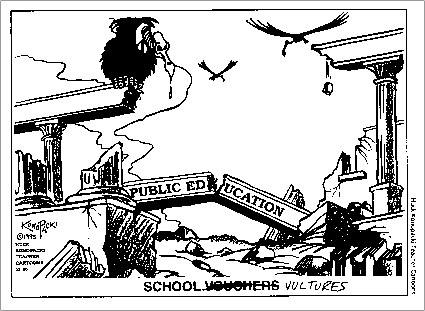An education voucher, commonly called a school voucher, is a certificate by which parents are given the ability to pay for all or part of their children’s education at a school or provider of their choice, rather than the public school to which they are assigned. This funding scheme is an obvious financial threat to public school boards as essential government funding is removed to other education providers.
Currently in Ontario, the vast majority of government funding for school boards providing elementary and secondary education is based on the enrolment of students in the board’s schools. Any decline in the enrolment would result in less funding for the school and board. In the secondary system, the student requires the successful completion of 30 credit courses to achieve their diploma. Generally, a student will attempt to achieve 8 credits in a given school year. A school board would receive approximately $9000 per student of government funding each year. Bill 52 proposes that 8 of the 30 credits could be achieved by the student receiving “equivalent” learning opportunities in the form of dual and external credits offered by private providers outside of the traditional secondary education system. The portability of the dual and external credits proposed in Bill 52 suggests that there must be corresponding portability in the funding of these credits. Private institutions, colleges and universities will not be interested in providing these services without compensation from the government or the individuals taking the credits.

Regardless, whether funding is made portable in vouchers or no funding at all is attached to dual and external credits, the certainty is that the funding attached to the credits will be removed from the existing secondary system. This is expected to have a staggering impact on an already underfunded system.